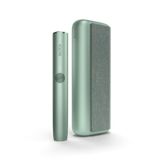Sub Ohm Vaping Explained
As an adult smoker considering switching to vaping, you may have encountered related technical terminology. Vaping is full of these seemingly complicated terms, and Sub Ohm vaping is one example requiring explanation.
For some adult vapers who want to experiment with flavour intensity and vapour production, there are different types of device kits available that come with particular specifications. These kits may allow an adult vaper to alter their vaping experience. Sub Ohm vaping is one example of this. Sub Ohm vapes typically produce bigger clouds of vapour.
In short, Sub Ohm vaping involves a device that typically delivers a high wattage, with a coil that has a resistance below (or sub) 1.0 Ohm. The difference between Sub Ohm vaping and standard vaping are the ways in which the devices produce vapour.
Why Sub Ohm Vaping?
While Sub Ohm vaping, especially for those who have recently switched from smoking cigarettes may appear complicated, there are reasons that some adult vapers might choose the Sub Ohm style over a standard vaping practice.
- A personalized vaping experience - Some adult vapers might be looking for a different vaping experience.
- Higher firing temperature - Those that use Sub Ohm vaping devices tend to opt for an e-liquid with a high Vegetable Glycerin content. This is because the VG element in the e-liquid generally impacts the thickness of an e-liquid. Find out more about PG and VG in e-liquids, with the article ‘PG vs VG in e-liquids’.
- Higher power outputs - For Sub Ohm vaping, typically a ‘mod’ style battery is required to heat up a low-resistance coil. Coils with a high resistance tend to heat up at a slower rate, and therefore work best with devices that have a low power output. A device with a coil that measures below 1.0 Ohm is usually considered a Sub Ohm device. For a deeper understanding of coils and coil types, read the ‘What Are the Different Types of Vape Coils?' guide.
- Different device settings - For some users, being able to modify the tank set-up and explore different e-liquid types is part of their Sub Ohm vaping experience. We advise using standard devices as intended by the manufacturer, and opting for compatible e-liquids that are recommended by the brand’s provider. Modification can have unintended consequences, and it could potentially damage the device.
Sub Ohm vapes provide a different experience from a standard device. However, this style of vaping will not suit every adult vaper.
Sub Ohm Vaping – Ohm’s Law
Ohm’s Law is the concept that describes how a proportionate electrical current is necessary for the amount of voltage passing across it. To understand Sub Ohm vaping and to achieve a customized vaping experience, it is important to understand what Ohm’s Law is and how it works. In a vape device, the electrical current flows from the battery through to the coils, vapourising the e-liquid. A coil with a large enough resistance is therefore necessary to match the flow of electrons from the battery. This chart aids in finding the correct levels of volts, watts, Ohm’s and Amps for a Sub Ohm vaping experience.

Sub Ohm Vape Safety
Always follow manufacturer guidance according to the device and follow their best usage practices. For standard vape devices, the manufacturer will usually provide guidance on changing parts that wear out, such as the device’s coil, the battery, and e-liquid types compliant with the brand.
Sub Ohm vaping is not for everyone. Those considering Sub Ohm vaping should be aware of the following factors often associated with the style.
Device damage - A higher wattage is generally required for Sub Ohm vaping - allowing a greater current to power the coil. As with any vape device, this may cause wear and tear over time. Keep an eye on the components inside the device to avoid damage.
Decreased battery life – Although the batteries are significantly more powerful than other types of vape batteries, Sub Ohm devices generally require more power. This may impact a battery’s lifespan.
E-liquid consumption - To produce large vapour clouds, more e-liquid is often required. Consequently, the e-liquid for a Sub Ohm vape may deplete faster than in other vape devices such as vape pens – although individual usage and frequency may also impact the lifespan of an adult vaper’s e-liquid.
Smoke-Free Alternatives: Introducing IQOS
With all this information about Sub Ohm vaping, you may be wondering if there are other vaping alternatives that better suit your preferences. For an adult smoker switching from smoking cigarettes, there are many types of smoke-free devices that do not require in-depth knowledge of coil resistance and wattages. Regardless, the best decision any adult smoker can make is to quit tobacco and nicotine use altogether.
* Reductions in levels of a range of harmful chemicals (excluding nicotine) compared to the smoke of a reference cigarette. See important information on IQOS.com
If a vape device is not suitable, you may want to consider IQOS heated tobacco. IQOS provides real tobacco taste and satisfaction. Unlike cigarettes, IQOS does not burn tobacco and therefore produces no smoke. Furthermore, IQOS produces no ash, and IQOS emits 95% less harmful chemicals compared to cigarettes.*
Important information: It does not necessarily equal a 95% reduction in risk. IQOS is not risk-free.
* ”95% less” represents the average reductions in levels of a range of harmful chemicals (excluding nicotine) compared to the smoke of a reference cigarette. See Important Information on IQOS.com
The specially designed HEETS sticks slot inside the IQOS device. HEETS come in a variety of flavours, intensities and aroma notes. There is a HEETS flavour to suit every taste and preference. Find IQOS and HEETS online.
Important information: IQOS is not risk-free.
* “95% less” represents the average reductions in levels of a range of harmful chemicals (excluding nicotine) compared to the smoke of a reference cigarette. See important information on IQOS.com
IQOS devices are not risk-free and provide nicotine, which is addictive. IQOS products are not alternatives to quitting and are not designed as cessation aids.
This article is for general information and educational purposes. Some of the information in this article is based on external, third-party sources and we make no representations or warranties of any kind regarding the accuracy, validity or completeness of such information.












